Tokyo January 2024
New Year is the most important holiday in Japan. I have moved to the New Otani Hotel as most businesses shut down from December 29th to January 3, so unless you are in a hotel with a restaurant, you are going to have to do a lot of cooking on your own.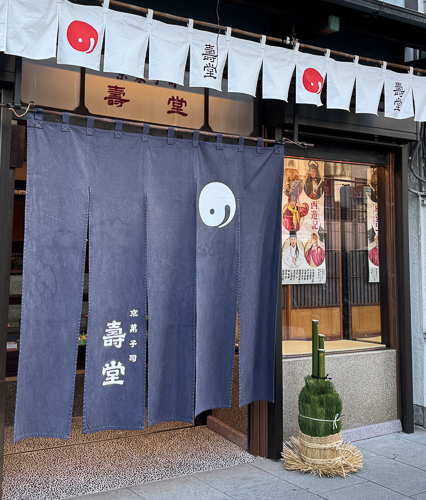
Leading up to the New Year, entrances are decorated with ornaments made of pine, bamboo, and other decorations. These are called kadomatsu, and during the period from right after Christmas until January 7, it is believed to provide temporary housing for the toshigami sama (deity) in order to ensure a great harvest and blessings from the family’s ancestors on everyone in the home. Pine, bamboo and plum trees each symbolize longevity, prosperity, and sturdiness.
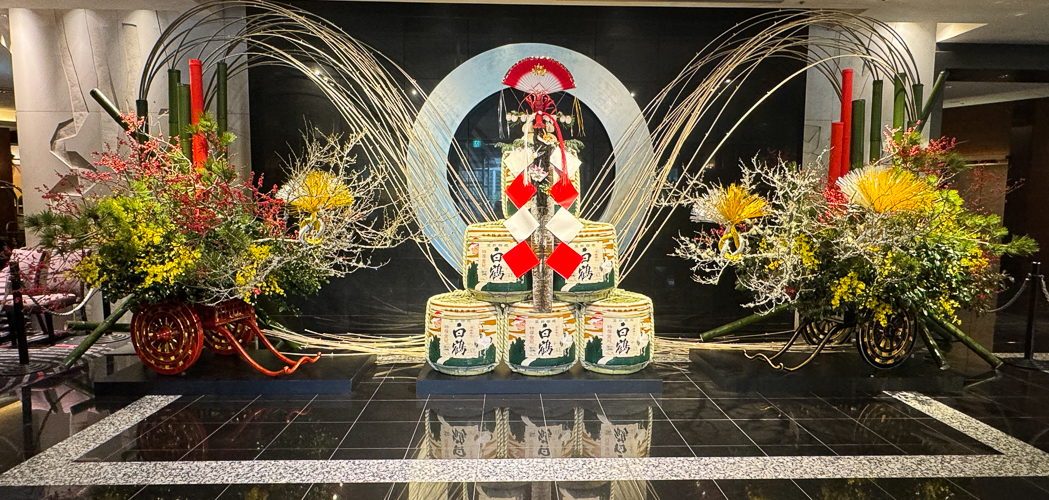
In the case of the hotel, the kodomatsu was really over the top, and a spot you would find families taking pictures all weekend long.
The week before you could walk the streets and pick up a kadomatsu to fit your budget.
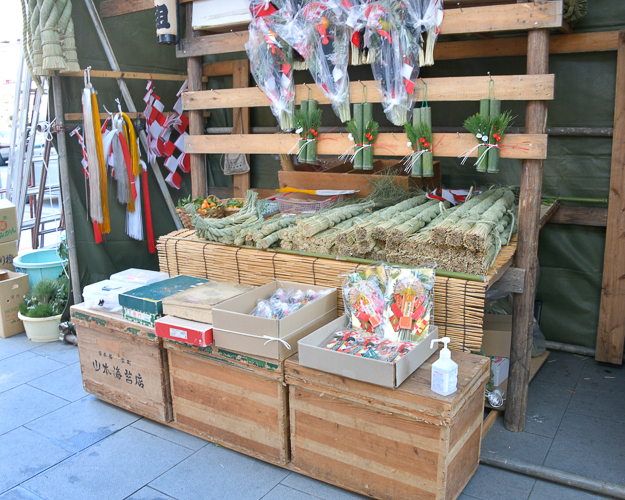
*
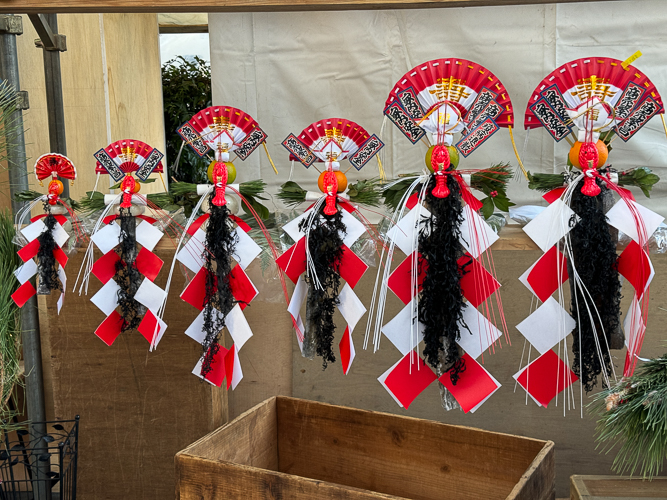
Shimekazari
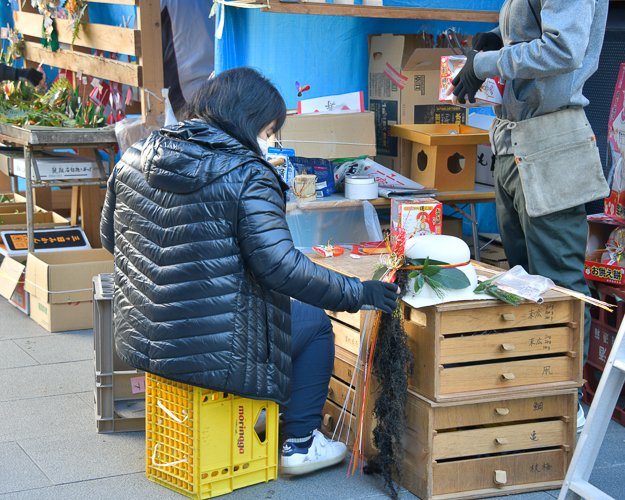
A woman assembling kagamai-mochi
Kagami-mochi, often translated as a mirror rice cake, is a rice cake used as a decoration in the New Year. Mirrors were often used for important Shinto rituals as they are believed to be a place where gods reside. These mochi (rice cakes) are shaped like an ancient round mirror to celebrate the new year together with the gods.
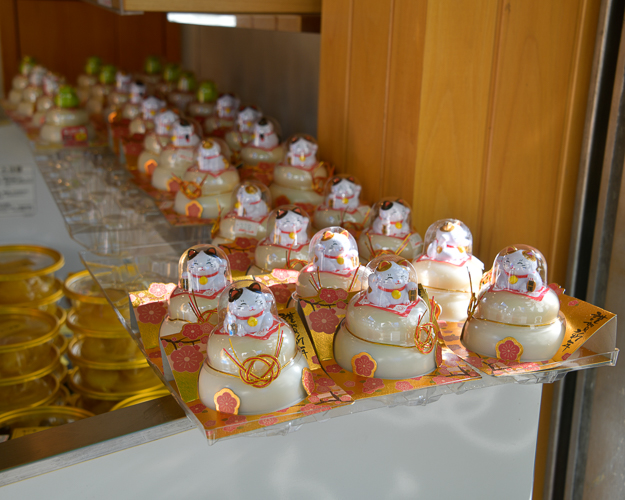
Kagami mochi topped with a maneki-neko rather than a mandarin orange.
On top of the rice cakes is a type of orange called daidai or mikan (mandarin orange). When written in kanji the word means “over generations,” thus representing a wish for prosperity of descendants over generations.
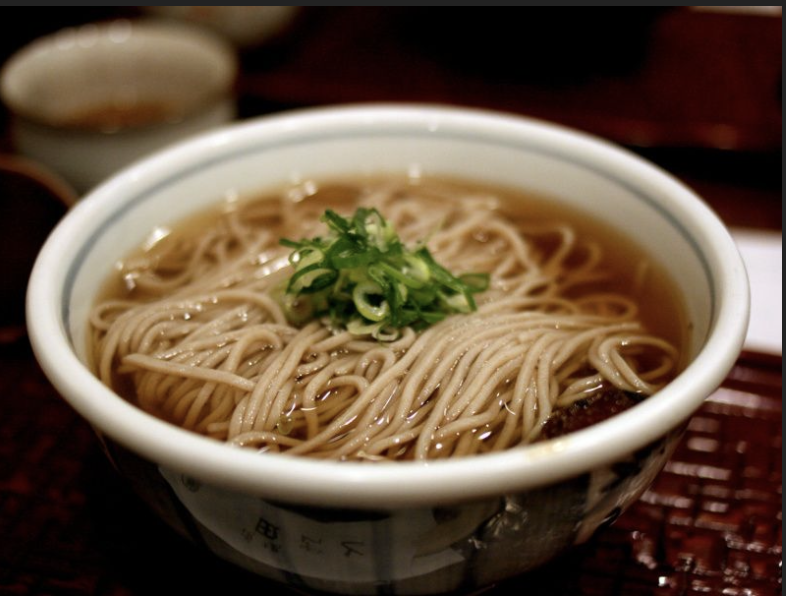
Last night, I joined several hundred people in one of the hotel’s ballrooms to partake in toshikoshi soba (buckwheat noodles) and sake. Buckwheat noodles symbolize longevity.
The day was spent enjoying various activities set up by the hotel.
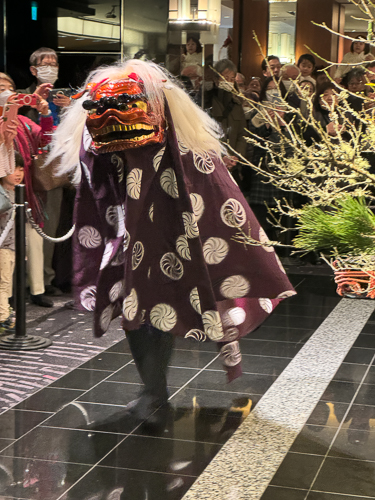
A Lion Dance
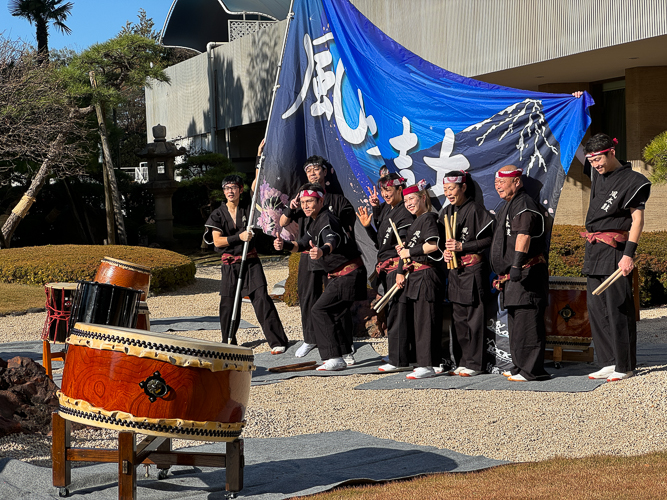
Taiko Drums
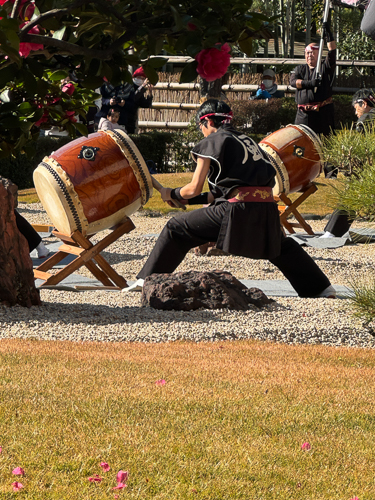
*
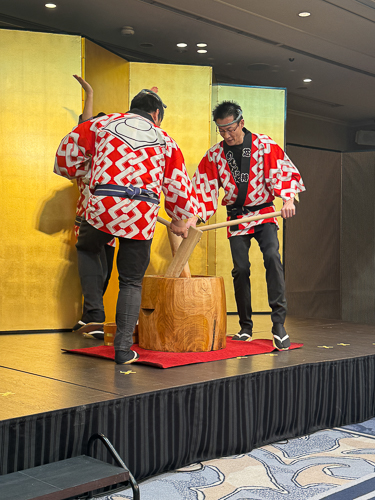
Mochi Pounding
During the week leading up to New Years Day I visited the temple to pay my 100 yen and get my fortune
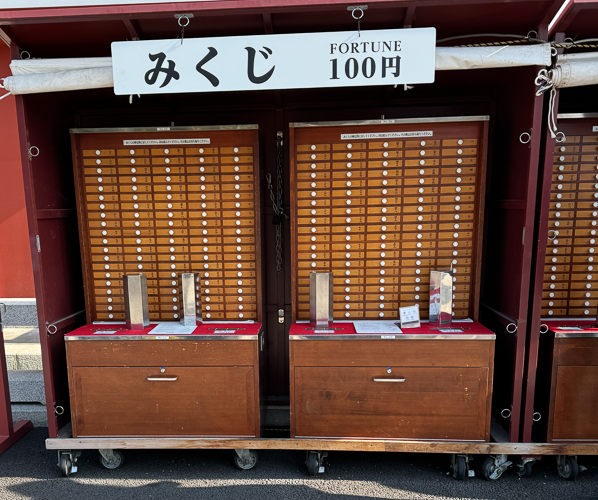
This is a fortune-telling practice where you shake a stick out from the large silver canisters. The sticks are inscribed with a symbol that corresponds to a drawer. You open the drawer to retrieve your fortune.
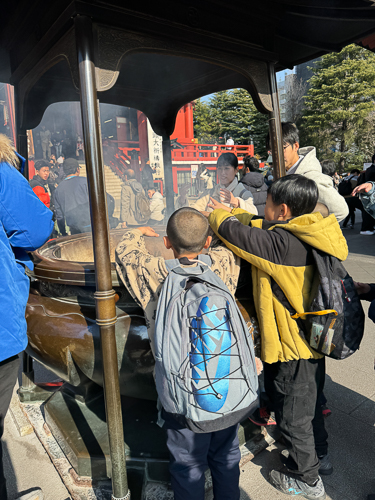
I also burned incense in the oseknko in front of Sensoji. It is said that if you have any aches and pains, you should fan the smoke towards that area as it is believed to have healing powers. Many people fan the smoke toward their heads in the hope of making themselves smarter.
I have always loved New Year’s in Japan, and this year it did not disappoint.